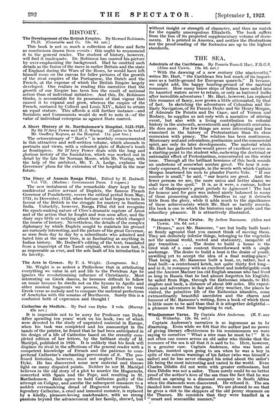It is impossible not to be sorry for Professor van
Dyke. After spending ten years' work on his• book, two of which were devoted to the study of unprinted material in Europe, when his task was completed and his manuscript in the hands of the printer, he found that he had been anticipated in his design of a life of Catherine based on the recently com- pleted edition of her letters, by the brilliant study of M. Mariejol, published in 1920.- It is unlikely that his book will displace its rival in the affections of the general reader with a competent knowledge of French and the patience to com- prehend Catherine's enchanting perversions of it. The pro- fessed historian, however, must not neglect Professor van Dyke. He has discovered some new material and throws light on many disputed points. Neither he nor M. Mariejol believes in the old story, of a _plot to murder the Huguenots, concerted with Spain and the Pope, and resulting in St. Bartholomew. Both agree to hold Catherine guilty of the attempt on Coligny, and ascribe the subsequent massacre to a Budden overmastering dread of Huguenot reprisals. The legendary Catherine, a cruel and immoral monster, is replaced by a kindly, pleasure-loving matchmaker, with no strong passions beyond the advancement of her family, shrewd, but
without insight or strength of character, and thus no match for the equally unscrupulous Elizabeth. The book suffers from the loss of its projected supplementary volume of docu- ments. It is printed in America, and neither the illustrations nor the proof-reading of the footnotes are up to the highest standards.


































 Previous page
Previous page